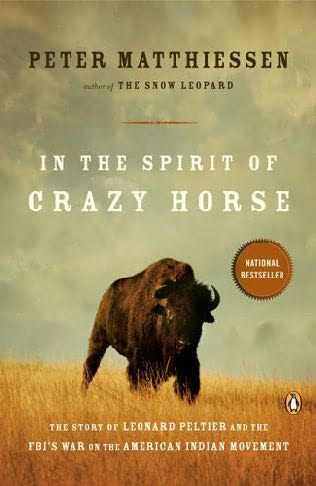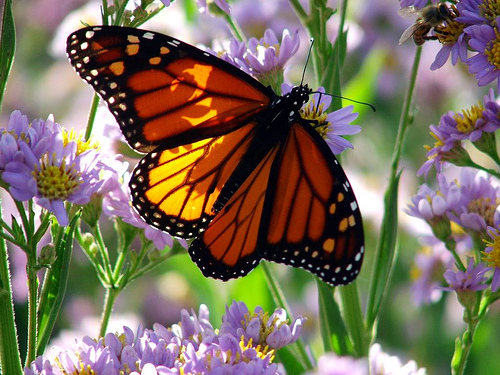My friend Layne blogs at
Librarian Hot, an utterly fantastic blog about gender and burlesque and sexuality, among other things. I recommend you check it out - lots more sex than in this blog!
She kind of threw down the academic gauntlet to me the other day in
this post which mentions the performance of race in burlesque. For those of you who place "burlesque" and "stripper" in the same category, you aren't really appreciating the full depth and strength of this performance art. As Layne
writes,
Part of what I love about burlesque is that it’s a matriarchal community: women are the star performers, they run the show onstage and often backstage, too, and they always present themselves as fearless, powerful, and in control.
Sure, it's hot women taking off their clothes for an audience, but they are in control of their sexuality and their performance in a way that empowers them. The only goal isn't to be as raunchy as possible or just to get off all those distracting clothes, but to provide a fun, skillful, and - yes - titillating performance. Anything to add to that, Layne?
Two burlesque performers are
The Shanghai Pearl and
Cherokee Rose, who are respectably Asian and Native American. Both play on aspects of their stereotyped roles in their performances, and Layne
asks "is enacting stereotypes with a knowing wink and a smile enough to challenge and unravel them? Or are these performances just serving to eroticize and perpetuate the original images?"
Because these two women play off two very different stereotypes, let's look at them one at a time before discussing how this type of race play works in our society.
Asian women are seen as:
intelligent yet pliable, mysterious yet ornamental…perpetually pre-pubescent–ageless and petite…high-pitched, girly–while simultaneously being exotic and wise…She comes from a culture where women traditionally serve men… (Eng 2000; 68)*.
There are websites specifically geared towards matching Asian women and White men, including
Classy Asian Ladies, where Asian women are described as "exotic", "high wage earners", "loyal", "wise", and even "retaining their youthful beauty and shapely beauty well into middle age". Yes, really. I'll wait for you to stop throwing up now. Personal ads featuring Asian women are ads on websites like Antimisandry (which I'm not going to link to because they have a habit of finding sites that link to criticize them and then spam them in comments - if any of you are from this website, don't bother because I'm going to just delete your comments. If you want to find this site, add ".com" to the website name), which is an anti-feminist, anti-woman website arguing that if women would just be submissive to their men, the world would suddenly be perfect. For men, I'm guessing. Sociological Images discusses this website
here.
Simultaneously, w

e have the image of the Geisha, the sexy, forbidden woman there as sort of a harem girl, their only thought to serve and please men. (Geisha are Japanese, but our stereotype lumps all these groups together.)
Here she is in her Halloween costume glory, picture found by typing "sexy Asian Halloween" into Google.
The Shanghai Pearl plays up some of these stereotypes - for example, describing herself as "exotic" on her
MySpace, and dressing up as a submissive, shrinking, graceless, conservatively clad (office assistant? librarian? school teacher?) in her performance (with what I believe is Chinese spoken in the background), before launching into an aggressive, powerful, and sexy striptease. Youtube
here, and do I even have to mention that it is Not Safe For Work? Her name itself clicks into our stereotypes - exotic, rare, etc. She is able to tap into both halves of the Asian woman idea, modest, submissive, and sexual all at once. (virgin/whore, any

one?)
Stereotypes of Indian women are a little harder to nail down, because we have a confused view of what Native Americans are, exactly. But American Indian women suffer under many of the same stereotypes as Asian women. Think Pocahontas, Disney style. Indian women are noble princesses, earth-mothers in skimpy buckskin and shiny braids (and little else), both innocent and sexy. Robert Smith, blogging at
Blue Corn Comics, has a great discussion of this with tons of links
here. If Native American women have been corrupted by the evil fire-water, then they are
drunken hoes. Wow, more virgin/whore dichotomies! Who would have thunk it! Picture
here, from "sexy Indian Halloween" search.
It was a little harder to find information about the performer Cherokee Rose, and I couldn't find any video or pictures of her using these stereotypes in her performances, although if you'd like to check out her work
here is another Not Safe For Work YouTube example. Layne
describes an act she saw featuring Cherokee Rose as "[set] to Tim McGraw’s song “Indian Outlaw,” wearing a Native American-inspired costume, which concluded with another performer (dressed in a sequined cowgirl outfit) chasing her off the stage with a toy shotgun." Cherokee Rose clearly here is tapping into the idea of the sexy Indian princess, as well as playing off the "cowboys and indians" genre of entertainment - but with sexy results!
We also need to take a moment here to unpack Cherokee Rose's chosen stage name. The Cherokee rose,
Rosa laevigata, is native to southern Asia (ironically). It was brought to Georgia in the 1780s and is the Georgia state flower. It is
also symbolic of the Trail of Tears. During Andrew Jackson's term, the Indian Removal Act of 1830 was passed (doesn't that sound like a great act?), mandating forcible removal of the "Five Civilized Tribes" of the deep South - the Cherokee, Chickasaw, Choctaw, Muskogee-Creek, and Seminole.
All of the tribes initially resisted the action, with the Seminole and Creek fighting brutal wars against the government that ended up costing the US more than
20 million dollars. In 1830s money. A handful of Native Americans were able to retreat far enough into the swamps in the area that the government got tired of chasing them, but the rest were forced to relocate to Oklahoma. In the winter, thousands of members of these tribes walked through ice and snow, covering over a thousand miles of territory to end up in a harsh and unfamiliar land far away from their native land. 2500-6000 Choctaw and 4000 Cherokee died - mostly the very young and the very old. It is a disgraceful, disgusting episode in American history.
According to the
Cherokee Messenger,
When the Trail of Tears started in 1838, the mothers of the Cherokee were grieving and crying so much, they were unable to help their children survive the journey. The elders prayed for a sign that would lift the mother’s spirits to give them strength. The next day a beautiful rose began to grow where each of the mother’s tears fell. The rose is white for their tears; a gold center represents the gold taken from Cherokee lands, and seven leaves on each stem for the seven Cherokee clans. The wild Cherokee Rose grows along the route of the Trail of Tears into eastern Oklahoma today.
You can watch a deeply problematic YouTube video with a song about the Cherokee rose and the Trail of Tears
here. Deeply problematic because it persists in referring to memory and memorializing, which we should in fact do, but we also need to be aware that THE CHEROKEE ARE NOT GONE. We usually view Indians as a population which belongs to the past, but that ignores the very real, very modern Native groups struggling and thriving throughout the country. The Cherokee Nation's website is
here.Was Cherokee Rose aware of the symbolism of her name when she chose it? I have no idea. If she was, it certainly adds depth to her stage presence.
Now, what can we conclude about performing stereotypes as a whole? Like gender, race is a performance. As a woman, I perform gender by doing things like wearing skirts and makeup. I like to wear those things, and I chose to do so, but my doing so is also a part of my gender performance. Because racial stereotypes are a combination of real cultural practices and ridiculousness, a POC can choose to perform race by playing up or playing down certain elements of their dress and behavior. There are several derogatory terms for POC who "act white", usually describing someone who is "white on the inside": Apple (Native Americans), Twinkie (Asians), Oreo (African Americans). These names suggest that both within and without of the community, there are behaviors that are expected of POC that demonstrate their identification either with their own race or with the majority.
White people performing a race that is not their own is a BIG, BIG, No-No. This is called appropriation, and it generally involves white people playing at an identity that is not their own. For example: wearing blackface, using a Native American as a sports mascot, or dressing up as a sexy harem girl for Halloween. Specific instances include
college students dressing up as racial caricatures for theme parties,
Heidi and Spencer taking on "Indian" names, or
those Russian ice dancers performing their idiotic "Aborginal" dance.
I will state my position on this in no uncertain terms: THIS IS RACIST. It is not
funny. It is not
meaningless. It is
RACIST.
As Angry Navajo Girl writes,
identity is not a costume for you to pervert, make fun of, or put on and then discard.
But this is not what The Shanghai Pearl or Cherokee Rose are doing. They are using the stereotypes of their own culture as inspiration. Particularly Cherokee Rose, who uses (deliberately or accidentally) a name that refers to the darkest hour of her people*** but whose act portrays a powerful, joyful, vital woman. Not
The End of the Trail, but a representative of a culture who is still here. To me, this is similar to the reclaimation of words like nigger, bitch, fag. Can your standard heterosexual white man use these words? No. He cannot unpack his own intentions from the cultural baggage bestowed on these words by other whites, other men, other heteros. For a black person, a woman, or a gay person, these words are now sources of pride rather than slurs. But they are fragile, prideful only in the right mouth.
By taking their racial and gender identities into their own hands, these burlesque performers are doing what burlesque has always done, using stereotypes (about women, about sex, about race) as a source of strength. Prideful only in the right performer, but with the right performer, what a message of resilience, defiance, resistance.
And all this from ladies taking off their clothes!
*Eng K., 2000, "The Yellow Fever Pages". Bitch 12:68-73.****it's my blog, I get to make up my own citation formats.***I'm assuming that The Shanghai Pearl is actually Chinese, and Cherokee Rose is actually Cherokee. They may not be, which is a whole different post.
ETA: I use Indian, American Indian, Native, and Native American in this post because different people prefer different terms. Some prefer Indian, others find it offensive, and the best bet is generally to use the *correct* name of the tribe whenever possible.









